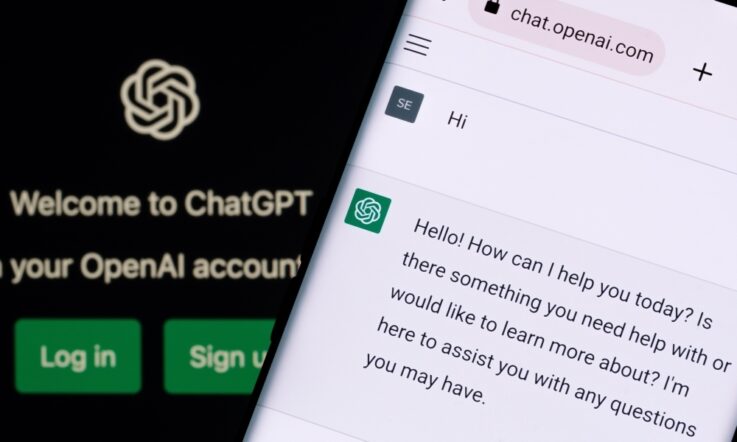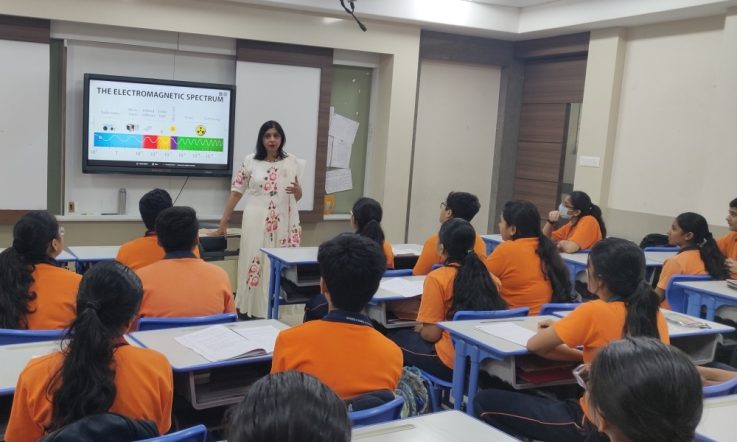Artificial Intelligence continues to be a popular topic for today’s educators. Evidence is emerging on its use, ethical considerations, and impact on teaching and learning. In our latest reader submission, Dr Kavita Sanghvi shares the findings from her study on understanding the impact of AI on student engagement, personalised learning, and academic progress in secondary school students.
Artificial Intelligence (AI) has increasingly woven itself into the fabric of our daily lives shaping our interactions with technology. Today, AI is expected to play a significant role in addressing complex challenges, enhancing education, and driving scientific innovation (OECD, n.d.).
In my conversations with educators, I have encountered a spectrum of perspectives on AI and its application in education. Some praised the use of AI while others expressed hesitation about integrating it into classroom practices. Additionally, educators were unaware of how AI could be incorporated into teaching methods.
Introducing AI at our school
Globally, it is acknowledged, that students must be encouraged to actively participate in the creation of AI (Miao & Shiohira, 2024). In my time as principal of SVKM’s CNM School our objective was to empower students to explore AI across all subjects, facilitating personalised learning through the HI-STEAM (history with STEAM) annual school event.
Our entire faculty collaborated to develop an action plan to introduce students to AI in education based on training from experts in colleges and schools on using various AI tools. They worked with platforms such as Gamma.ai, InVideo, MagicSchool.ai, Microsoft Co-pilot, ChatGPT, Gemin.ai, and several others.
For example, students created educational games demonstrating their understanding of ecosystems using AI tools, and a virtual tour experience to showcase the effects of war as described in the poem A Doctor’s Journal Entry.
After a week of teaching and learning with AI across all academic subjects and student presentations showcasing their learning, an impact analysis was conducted in the school. A written evaluation was then performed to assess the effectiveness of the implementation.
What the study involved
The study examined how AI tools support student engagement, personalised learning, and student progress in secondary school subjects (Sanghvi, 2024).
Conceptual framework

This mixed-methods study involved 832 secondary students in grades 7-10. For quantitative data, pre- and post-intervention test scores from the HI-STEAM event were analysed for academic improvement. A standardised rubric helped to evaluate student presentations.
Parent and student surveys and teacher interviews were also used to collect data. Parent surveys measured perceptions of AI tools' impact on learning and engagement, while student surveys captured experiences and attitudes. Twelve teacher interviews provided insights into AI tools' effectiveness in personalised learning. Student attendance during the AI-integrated teaching week and the HI-STEAM event was recorded.
Study findings
Academic performance: We compared student academic performance in unit tests pre- and post-the HI-STEAM event. We found the students performed very well in all 7 subject areas, except for grade 8 biology and grade 9 economics.
Student engagement: Student attendance during the HI-STEAM event was high – 97% in both grades 7 and 8, and 93% in grades 9 and 10.
Quality of presentations: There were 207 responses to the parent survey, which evaluated the quality of projects created by all 832 students at the event; 131 parents found them excellent, 73 found them good, 2 found them poor, and one parent found the project average. Thus overall, the perceived quality of the presentations was high.
Teacher perspectives
Teachers expressed that student presentations and academic performance improved, students were exploring beyond the textbook and learning, and AI tools helped students learn content. Moreover, they observed a positive impact on student learning, improvement in student skills and long-term memory. Specifically, students retained conceptual information over a longer period; concepts taught through AI tools were successfully recalled during first term evaluations 3 months later, which was truly commendable.
Teachers also mentioned that students found the theme interesting and significant, peer interaction and teamwork improved, teacher-student bonding increased, and the classroom was student-centred. Teachers mentioned that the student engagement and attendance during that period were high.
The teacher acted more as a facilitator in the classroom, allowing students to use AI to support personalised learning. Students were using AI at their own pace, and they had the freedom to delve into a world of knowledge. However, teachers reported students lacked the expertise to evaluate authenticity and information provided by AI and felt burdened by the present curriculum assessment patterns and a lack of expertise of using AI. They also feared that students were finding an ‘easy way out’ to complete assignments, and the research they produced was not in-depth.
Final thoughts
The findings from a study conducted at our school underscore the potential advantages of integrating AI tools in education, while also emphasising the need for further research into the credibility of information and equitable access to resources. Our students were proficient with digital tools but not equipped with the skills to critically review the information and evaluate its authenticity.
References
Miao, F., & Shiohira, K. (2024). AI competency framework for students. UNESCO. https://doi.org/10.54675/JKJB9835
OECD. (n.d.) Artificial intelligence. https://www.oecd.org/en/topics/policy-issues/artificial-intelligence.html
Sanghvi, K. (2024). Al in Secondary Classroom: A Study of Its Impact on Student Engagement, Personalized Learning, and Academic Progress. International Journal For Multidisciplinary Research, 6, (5). https://doi.org/10.36948/ijfmr.2024.v06i05.29553
Have your students used AI in their learning activities?
Reflect on your observations of the opportunities and challenges of using AI as discussed in this article. What supports do you and your colleagues need to make effective use of AI tools? What supports do students need?



